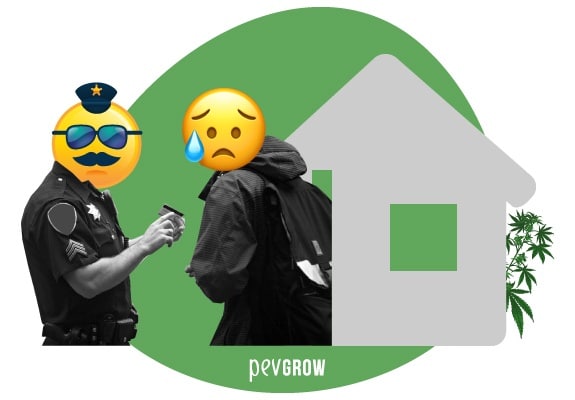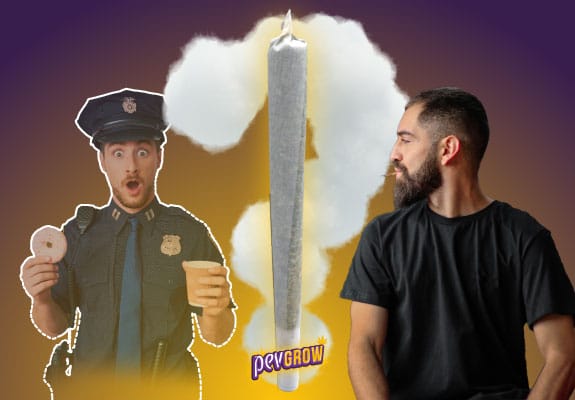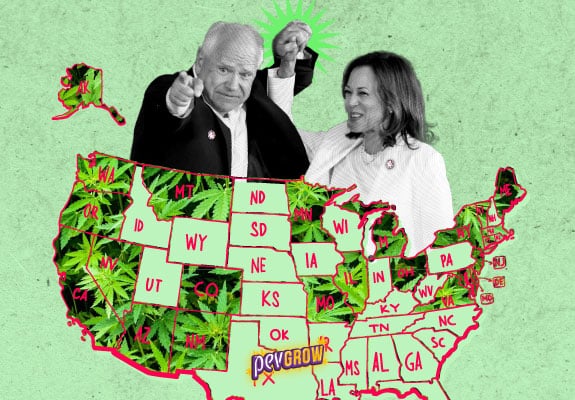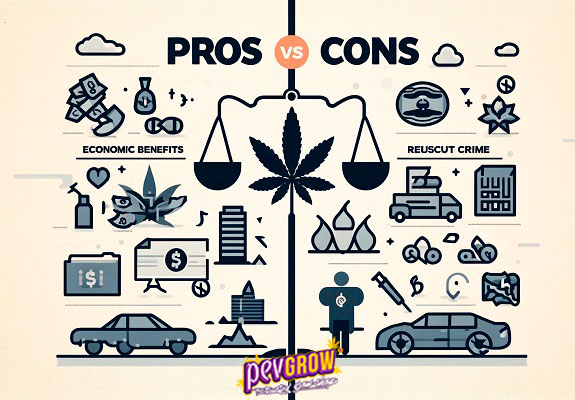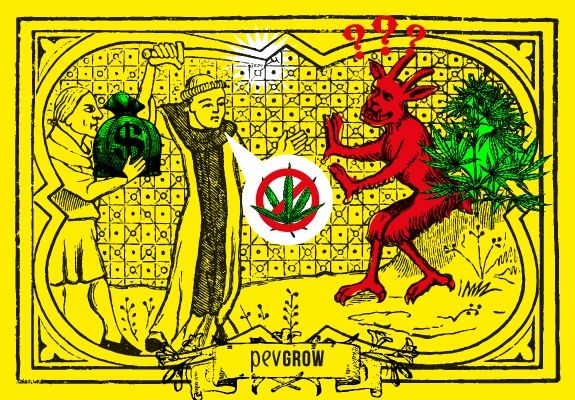

08-04-2022 09:00:57 - Updated: 8 April, 2022
In recent years we have seen a slow legalization of cannabis throughout the world, especially in more developed countries such as the USA, Canada, Israel or Germany, among others. It appears that many therapeutic uses for this sacred plant have been discovered around this time, and there is a lot of interest from pharmaceutical companies in this regard.
But the history of marijuana and its relationship with humans goes back many years, and even if it seems that the permissiveness of its use is spreading lately, the reality is very different, and if you want to see a summary of why there are so many interests behind the cannabis ban I invite you to read this article, it can change the way you see things.
🎯 Religion and forbidden sins
The use of cannabis as a medicine dates back more than 40 centuries of history, being one of the most important plants in the first medical book in history, from the time of Emperor Sheng Nung in ancient China. Its popularity spread throughout Asia, until the first great Chinese religion stopped it with the arrival of Taoism in the 4th century BC This meant the first meeting between the science that defended the medicinal use of cannabis and religion. which stigmatizes her for several reasons.
But Taoism could not stop the advance of this plant, which found many industrial uses thanks to its rapid growth and resistant fibers, which is why it crossed the Himalayas and reached the Middle East. In these lands it clashed again with religion, in this case with Islam, which at first allowed its consumption, but prohibited it from the 14th century.
The earliest written record of the ban on the cannabis plant dates back to this period, and since then there are more territories that control it than allow it. It was the year 1378 when the then Emir of Joneima in Arabia Soudoun Sheikouni announced what would be the first marijuana prohibition law in the world, affecting the entire territory.
🔥 Marijuana in the West, a love / hate story
It was still in the Middle Ages when the cannabis plant reached Europe, at a time when religion had absolute power in society. This did not help the popularity of cannabis as a medicine much, much less for recreational use, and in 1484 it was banned by Pope Innocent VIII along with many other psychoactive plants, which were accused of being used to perform witchcraft rituals.
In those years colonialism spread throughout the world, which was implanting its convictions in all the conquered territories and was trying to eradicate many of the customs of the inhabitants of these “new lands”, especially those that had to do with religion. In parts of Asia and Africa, cannabis was used in spiritual ceremonies until the arrival of the European conquerors, who tried to end its use by all means, although fortunately in many cases they did not. success.
Already in the nineteenth century Napoleon was one of the key figures in the history of marijuana prohibition, worried about the large consumption that began to take place in his great army after the Egyptian campaign, since in this African country they had a great cannabis culture at the time. For their part, the British troops had the task of prohibiting its consumption both in South Africa and in all the Asian territories they invaded.
✅ Cannabis for recreational and medicinal use accepted by society
During the 19th century, the popularity of cannabis in Europe began to be important, especially in France, where it began to be seen more and more in pharmacies, thanks, among other things, to publications by Dr. Jacques Joseph Moreau, who details many medical applications of marijuana.
In one of his works he also spoke for the first time about the psychoactive effects of this plant, as well as the intoxications caused by its excessive consumption. Distortion in the perception of space / time, euphoria, dissociation of ideas or intellectual excitement are some of the most notable effects this doctor has exhibited on society.
And so we come to the 20th century, and thanks to studies such as those of the prestigious Irish doctor William Brooke O’shaughnessy, cannabis has become the second most used active ingredient in pharmacies after opium. Ointments, cannabis creams, liqueurs, suppositories, candies, and all kinds of marijuana products filled pharmacies around the world, but these drugs had a commercial problem, which was that anyone could grow marijuana plants at home and cure your ailments without having to buy anything.

🚀 The pharmaceutical industry and the cannabis ban
In the year 1900, scientists discovered petrochemicals and with it the possibility of creating all kinds of derivative products Of oil. In their investigation they discovered several new vitamins and thought that all kinds of medicines could be produced, something that oil tycoon John Davidson Rockefeller found very interesting.
From that moment a smear campaign against natural medicine and homeopathy began, which were mocked and even some of the doctors who defended it were imprisoned. Rockefeller spent more than $ 100 million at the time to create flu groups that went to hospitals talking about the benefits of his new drugs, while most medical schools were closed and those that remained accepted the new standard of medical education.
📲 Capitalism and cannabis, an incompatible duo
We are in the first decades of the 20th century, when several factors joined together and contributed to a ban on marijuana in the world, even if they all boil down to the same factor that was beginning to become fashionable, capitalism. Until then, cannabis was fundamental in the paper, pharmaceutical and textile industries, fuel was even developed from this plant, so it was at the heart of the economy.
Just as Rockefeller influenced the interests of the pharmaceutical industry, the DuPont family did the same with petroleum-based fabrics and paper. Lycra, nylon or neoprene began to compete with hemp fabrics, and millions of trees were cut down every year to be turned into paper. Much of that newspaper ended up in the presses of Hearst, the DuPont family-related communications group that controlled newspapers, magazines and even a radio station, some broadcast media that ran a lot of fake news about discrediting cannabis.
📖 The Dangerous Plant, a Devil’s Crop
At the time, the immigration of Mexicans to the western states of the United States was growing a lot, and many of these immigrants enjoyed smoking marijuana. On the other hand, the consumption of this plant by black artists had become quite popular, especially in New Orleans and other areas of the state of Louisiana. This has created the perfect breeding ground for linking cannabis with criminal acts that have always been attributed to these ethnic groups
Numerous publications appeared that implying marijuana use drove people crazy and incited them to commit all kinds of crimes, robberies, rape, homicides,etc. This began to permeate American society, especially in the upper classes, who accepted that cannabis was bad despite all the medicinal properties it had displayed.
The tobacco industry has seen its interests jeopardized by the joint smoking trend among some young people, so it didn’t take long to join the anti-marijuana trend. This is how many of the most powerful economic lobbies united against an establishment, including the pharmaceutical, textile, paper, tobacco and fuel industries.
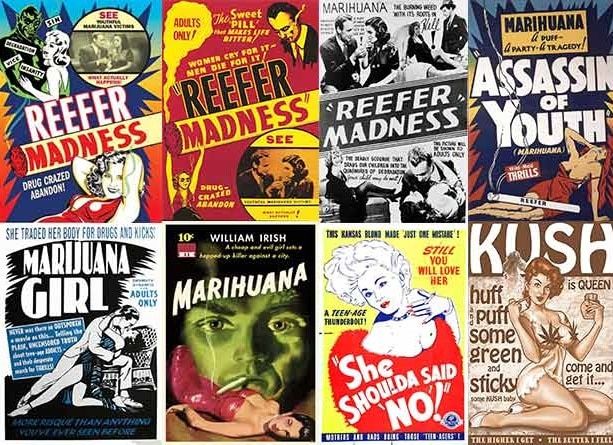
👌 The federal narcotics office, the beginning of the end
In the 1930s and thanks to the pressure exerted by advertising financed by all these influential ruling power groups, theofficeFederal Narcotics Department in the United States. It was led by Harry Anslinger, who served for 32 years under 5 different presidents.
From 1930 to 1937 Harry Anslinger, supported by all the reports that often came out relating to the use of cannabis with crime and marginalization, devoted himself to trying to put marijuana on a par with other stronger substances such as opium, until to the point that in 1937 he managed to pass a law banning this plant throughout the country.
✨ The War on Drugs and Global Prohibition
When World War II ended, the so-called cold war between the US and the Soviet Union began, or whatever, the capitalist model versus the communist model. In the United States, anything that smacked of a communist was branded bad and unpatriotic, and this gave new opportunities to the war on drugs.
As the Yankee army fought in Vietnam, a new antiwar culture was making its way among the youth of the United States, the hippie movement. This generation defended peace, love and freedom, were totally against wars in their country and had made the use of marijuana fashionable again. With all these ingredients, the United States government invented that behind the incitement to the use of cannabis among young people were the Communists to discourage the defense of their country.
⛳ The failure of the prohibitionist policy
Many years of repression have passed from the 1960s until the arrival of the new millennium, when it seems that many countries have realized that the prohibition of cannabis not only did not end its consumption, indeed, every year. it spread more and being banned the only thing causing it added problems, so they began to change their policies.

⭐ Conclusion
Cannabis was not banned due to its toxicity or problems associated with its use, it was a matter of economic interests of a few people. Prohibition has caused far more problems than those generated by its free consumption, but it wasn’t until recently that most states of the world understood this, let’s hope they join this legalizing trend now.

